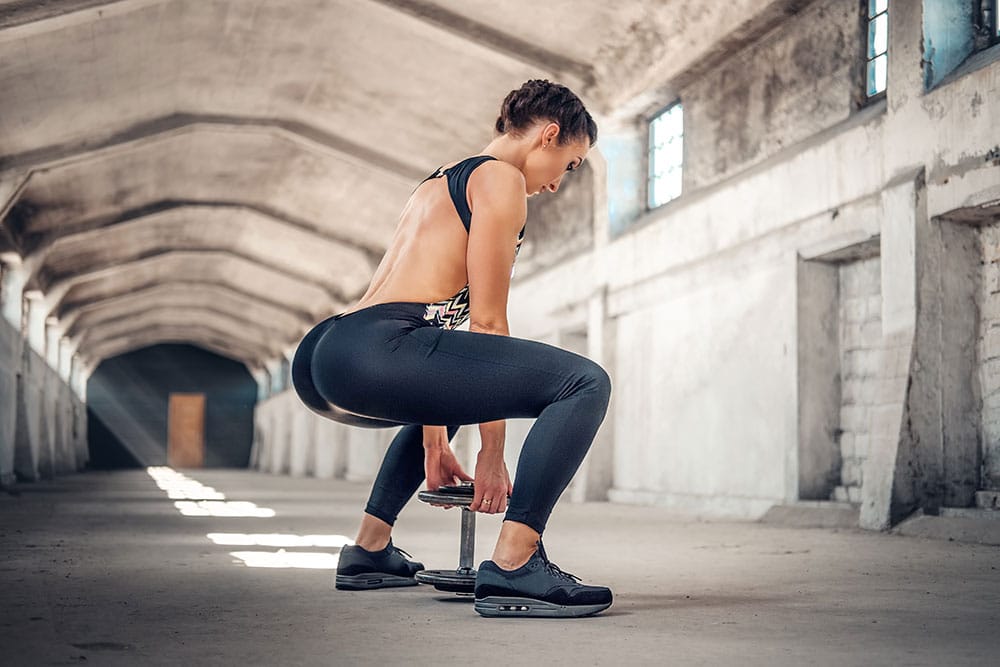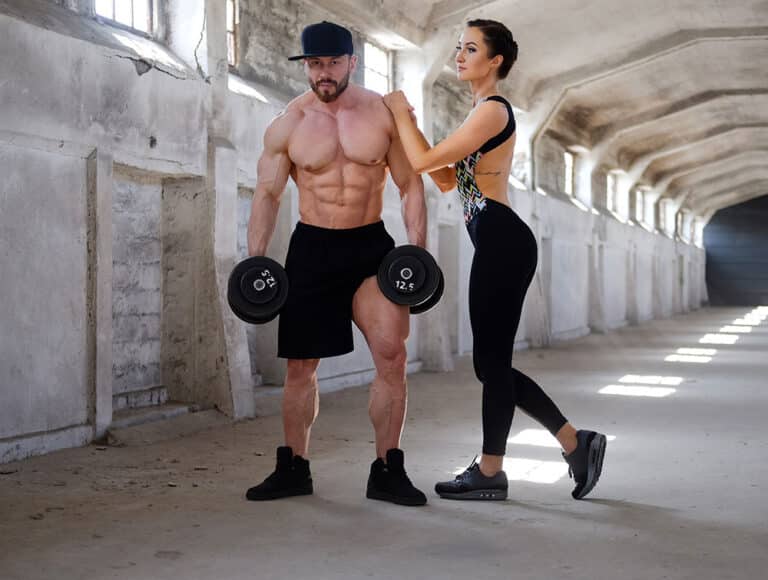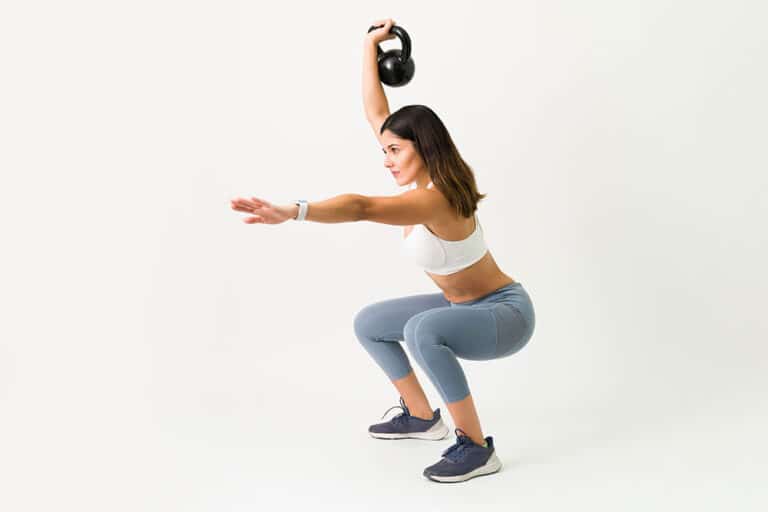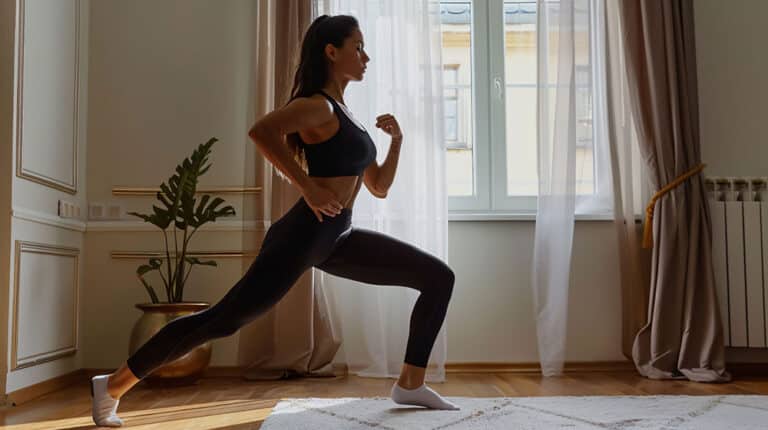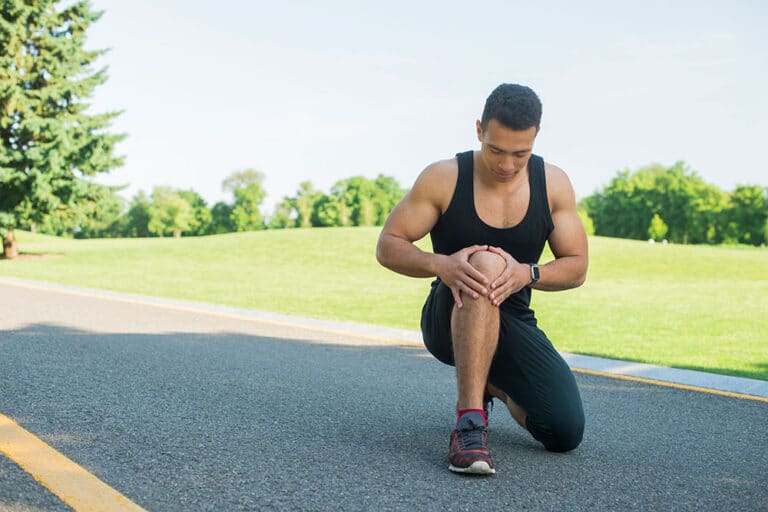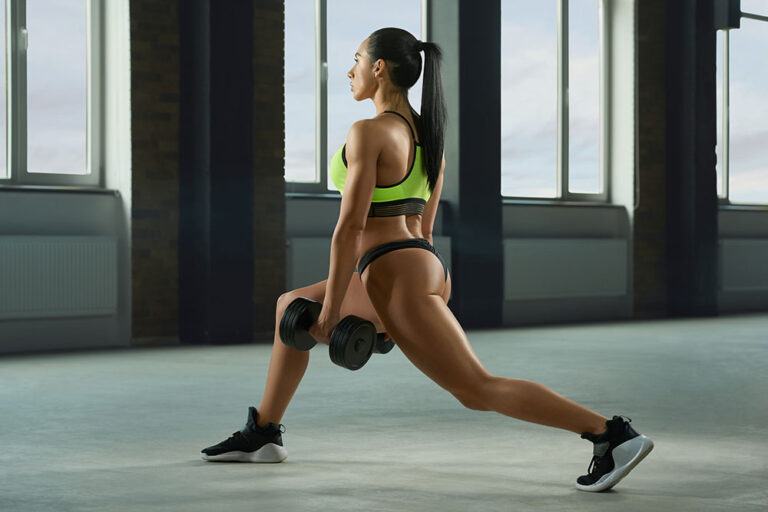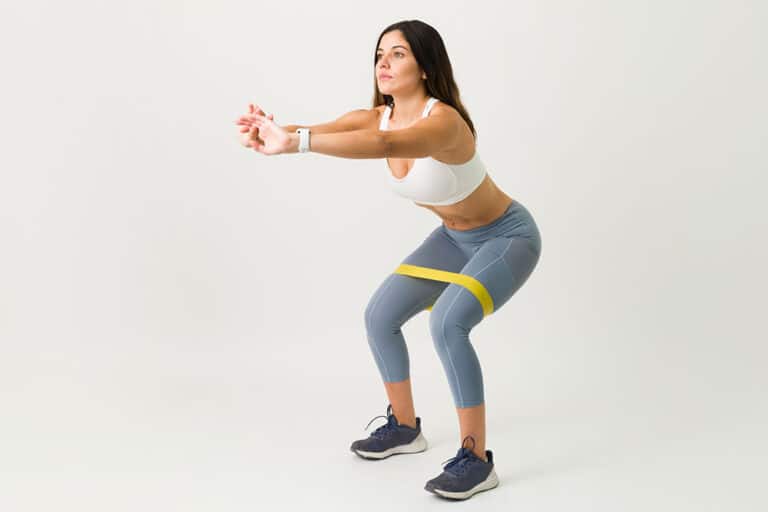Understanding Leg Exercises
Benefits of Leg Exercises
Leg exercises, particularly squats, offer a multitude of benefits that contribute to overall fitness and everyday functionality. When looking to master how to do bodyweight squats, understanding these benefits is essential.
- Engages Multiple Muscle Groups: Squats target major muscle groups including quadriceps, hamstrings, glutes, abdominals, and calves. A barbell version additionally works the back muscles (Healthline).
- Enhances Daily Activities: Performing squats strengthens the muscles needed for daily tasks such as sitting, standing, and bending tasks.
- Core Strengthening: Squats improve overall core strength, balance, and posture, crucial for reducing the risk of injury.
- Comprehensive Engagement: When done correctly, squats engage a variety of muscles including rectus abdominis, obliques, spine erectors, shoulders, arms, chest, and back.
- Calorie Burning and Athletic Boost: Squats boost metabolism by burning calories and improve athletic performance.
- Versatility and Motivation: Squats don’t require any equipment, making them a versatile and motivating exercise choice. (Healthline)
Importance of Leg Strength
Building leg strength is fundamental not just for fitness enthusiasts but also for enhancing an array of physical activities.
- Hip Strength and Performance: Squats significantly increase hip strength, an area often weakened by sedentary lifestyles, thus benefiting overall sports performance (High Performance Health).
- Boosts Anabolic Hormones: Squats elevate levels of testosterone and human growth hormone, vital for muscle building and countering aging effects (High Performance Health).
- Athletic Enhancements: Regular squat protocols improve sprinting speed, acceleration, and jumping ability, with noticeable improvements over a 12-week period.
- Increased Range of Motion: Enhanced hip range of motion through squats contributes to better performance in various sports and activities.
By incorporating squats and other leg exercises into a fitness routine, one can enjoy the extensive benefits they offer. Explore more about integrating these exercises into your routine through our articles on quick leg workout no equipment, bodyweight leg challenge, and how to build leg muscle without weights.
Bodyweight Squats Basics
Mastering bodyweight squats is essential for those seeking to enhance leg strength, stamina, and overall health. This section provides an overview of the muscle groups engaged during a squat and outlines proper form guidelines to ensure you’re performing the exercise correctly and effectively.
Muscle Groups Engaged
Bodyweight squats are a comprehensive lower body workout, targeting multiple muscle groups simultaneously. The primary muscles engaged during a squat include:
- Quadriceps (quads)
- Gluteus Maximus (glutes)
- Hamstrings
Supporting muscle groups, such as the core, calves, and lower back, also play a crucial role in stabilizing the body during the exercise (Exercise.com). Here’s a breakdown of the muscles involved:
| Muscle Group | Primary/Secondary Role |
|---|---|
| Quadriceps (quads) | Primary |
| Gluteus Maximus (glutes) | Secondary |
| Hamstrings | Secondary |
| Core | Stabilizer |
| Calves | Stabilizer |
| Lower Back | Stabilizer |
Proper Form Guidelines
Maintaining correct form is vital for maximizing the benefits of bodyweight squats and avoiding injuries. Follow these guidelines to ensure proper technique:
- Starting Position
- Stand with feet shoulder-width apart.
- Ensure ankles are directly beneath the hips.
- Distribute weight evenly across the big toe, little toe, and heel (Exakthealth).
- Lowering Phase
- Initiate the movement by bending at the hips and knees simultaneously.
- Keep your chest up, shoulders back, and gaze forward.
- Lower your body until your thighs are parallel to the ground, or as low as your flexibility allows.
- Ensure your knees track over your toes and do not collapse inward.
- Rising Phase
- Push through your heels to return to the starting position.
- Maintain a neutral spine and engage your core to stabilize your lower back and pelvis.
- Breathing
- Inhale as you lower your body.
- Exhale while rising to the starting position.
By adhering to these guidelines, you will ensure a proper form, which is crucial for safe and effective bodyweight squats. For additional variations and further assistance, explore our detailed guide on how to build leg muscle without weights.
Remember that consistent practice and attention to form are key to performing bodyweight squats correctly. Check out more leg exercises, such as bodyweight lunge variations and quick leg workout no equipment, to diversify your routine and enhance your leg strength.
Variations of Squat Exercises
Variations of squat exercises can help target different muscle groups and add diversity to your workout routine. Here are two popular squat variations: Jump Squats and Sumo Squats.
Jump Squats
Jump squats are a dynamic variation that provides a great way to enhance muscle power and agility. They primarily work the glutes, thighs, hips, and legs. This exercise incorporates an explosive jump, making it an effective plyometric movement.
How to Perform Jump Squats:
- Start in a standard squat position with feet shoulder-width apart and toes slightly pointed out.
- Lower your body into a squat, pushing your hips back and bending your knees to at least 90 degrees.
- Engage your core and jump explosively, extending your legs fully.
- Land softly on the balls of your feet, immediately dropping back into the squat position.
| Metric | Improvement After Training |
|---|---|
| Sprint Time | Reduced |
| Explosive Strength | Increased |
Jump squats can be a key component in a quick leg workout with no equipment that enhances sprinting, acceleration, and jumping abilities (High Performance Health).
Sumo Squats
Sumo squats are particularly beneficial for targeting the inner thighs and glutes. Their wide stance emphasizes different muscles compared to the traditional squat.
How to Perform Sumo Squats:
- Stand with feet wider than shoulder-width apart and toes pointed out at a 45-degree angle.
- Lower your body into a squat, keeping your chest upright and your knees tracking over your toes.
- Push through your heels to return to the starting position.
| Metric | Muscles Targeted |
|---|---|
| Inner Thighs | Yes |
| Glutes | Yes |
Incorporating sumo squats into your leg routine can be especially effective when combined with other exercises that target the lower body, like those in our bodyweight leg challenge.
By experimenting with these squat variations, you can create a well-rounded workout that targets various muscles in the legs. For more tips on enhancing your leg strength and performance, check our articles on how to build leg muscle without weights and leg strengthening for runners.
Incorporating Squats into Your Routine
To fully harness the benefits of bodyweight squats, it’s essential to integrate them effectively into your fitness regimen. This section covers the optimal frequency and repetitions for squats and how to combine them with cardio exercises for a comprehensive workout.
Frequency and Repetitions
The optimal frequency for performing squats varies based on individual fitness goals and levels. For general fitness improvement and muscle maintenance, aim to perform squats a few times per week. Starting with 12-15 squats at least three times weekly (Healthline) is recommended. Gradually increase the number of repetitions and sets as your strength and endurance improve.
| Fitness Level | Frequency | Repetitions per Set | Sets per Session |
|---|---|---|---|
| Beginner | 3 times/week | 12-15 | 2-3 |
| Intermediate | 3-4 times/week | 15-20 | 3-4 |
| Advanced | 4-5 times/week | 20+ | 4-5 |
For those seeking to build muscle or increase strength, incorporating more sets and varying squat types can prevent plateaus and promote continuous improvement. Explore different variations to diversify your workout, such as jump squats and sumo squats.
More details on leg exercises and their benefits can be found on our leg workout frequency bodyweight page.
Combining Squats with Cardio
Combining squats with cardiovascular exercises can enhance your overall fitness and burn more calories. Integrating activities like running, swimming, or cycling can boost endurance and accelerate weight loss. For example, a 155-pound individual can burn approximately 223 calories in 30 minutes of vigorous squat exercises (Healthline).
Here are some ways to combine squats with cardio:
- Circuit Training: Alternate between sets of squats and short bursts of cardio exercises. Example: perform 15 squats followed by one minute of jumping jacks, repeat for 4-5 rounds.
- HIIT Workouts: Incorporate squats into High-Intensity Interval Training (HIIT). Example: perform 30 seconds of squats, followed by 30 seconds of sprinting, repeat for 10 cycles.
- Cardio Warm-up: Begin your workout with 5-10 minutes of moderate cardio (e.g., brisk walking or light jogging) before moving into your squat routine.
For a specific example and guide on combining squats with cardio, visit our page on quick leg workout no equipment.
Combining strength and cardio exercises can maximize the health benefits of your workouts and target multiple aspects of fitness. Experiment with different formats to find what works best for your body and goals. For more on this, see our article about leg strengthening for runners.
Implementing these strategies will help enhance your overall fitness routine by incorporating squats effectively and ensuring continuous progress when doing bodyweight squats.
Health Benefits of Squats
Bodyweight squats offer numerous health benefits, particularly for those looking to increase their leg strength and performance while reducing the likelihood of injury during physical activities. In this section, we will discuss how squats contribute to both strength and performance improvement, as well as injury prevention.
Strength and Performance Improvement
Bodyweight squats are key exercises for enhancing strength and overall physical performance. They target multiple muscle groups, including the quadriceps, hamstrings, glutes, and core muscles, making them a comprehensive lower body workout.
Performing squats regularly can lead to significant improvements in:
- Strength: Squats increase strength in the hips, which are commonly weak due to the sedentary lifestyle of the 21st century (High Performance Health).
- Speed: Squats improve sprinting, acceleration, and jumping height/distance. Studies show enhancements in these athletic metrics after 12 weeks of squatting protocols (High Performance Health).
- Range of Motion: Squats increase hip range of motion, a critical factor in various sports and activities.
| Benefit | Improvement Noted After 12 Weeks |
|---|---|
| Sprinting | Enhanced Speed |
| Acceleration | Faster Start |
| Jump Height/Distance | Increased |
Incorporating squats into your routine can boost your athletic performance significantly. They also help burn calories, build muscle mass, and keep one motivated through the variety they offer. For optimal results, consider combining squats with other leg exercises such as those described in our bodyweight lunge variations article.
Injury Prevention
Regularly performing squats can aid in preventing injuries by strengthening the muscles, ligaments, and tendons around the hips, knees, and ankles. A strong lower body is essential for maintaining proper alignment and stability during various physical activities.
Benefits of squats for injury prevention include:
- Core Strengthening: Squats engage core muscles like the rectus abdominis, obliques, and transverse abdominis, which help maintain proper posture and balance, reducing the risk of falls.
- Joint Stability: Strengthening the lower body muscles enhances joint stability, particularly in the knees and hips, which can prevent common injuries (Healthline).
- Muscle Balance: Squats help to correct muscular imbalances that may lead to injury. As a compound exercise, they work multiple muscle groups simultaneously, promoting muscle balance (Healthline).
For more tips on incorporating safe practices into your routine, refer to our article on leg exercises for bad knees.
| Knee and Hip Stability | Core Strengthening |
|---|---|
| Reduced Knee Injuries | Improved Posture |
| Enhanced Hip Stability | Better Balance |
In summary, squats are not just a way to build muscle but also a means to protect your body from injuries. They can be easily integrated into your workout regimen, providing both strength and preventive benefits without the need for equipment. To maximize these benefits, always follow proper form guidelines and incorporate a quick leg workout no equipment into your routine.
Common Mistakes to Avoid
When learning [how to do bodyweight squats] correctly, avoiding common mistakes is crucial to ensure proper form and prevent injuries. This section will highlight frequent errors in breathing techniques and body alignment.
Breathing Techniques
Proper breathing is vital during bodyweight squats. A common mistake is holding one’s breath, which can increase blood pressure and strain the body. Instead, it’s essential to follow a specific breathing rhythm to maintain stability and control.
Guidelines for Proper Breathing:
- Inhale: Breathe in deeply before starting the squat to brace your core.
- Exhale: Breathe out as you push up from the squat position.
Consistent breathing helps in maintaining balance and reducing fatigue. Incorrect breathing can compromise the form and effectiveness of the exercise. For additional tips on improving leg strength, check out our guide on leg strengthening for runners.
Body Alignment and Posture
Ensuring proper body alignment and maintaining good posture are key components of an effective squat. Here are some common mistakes and how to avoid them:
Bending the Knees First
Initiating the squat by bending the knees first is a common mistake. The correct way to start the movement is by pushing back slightly with the butt before bending the knees. This helps to maintain the proper form and reduces stress on the knees.
| Common Mistake | Proper Technique |
|---|---|
| Bending knees first | Push back with the butt first |
Knees Falling In or Out
Another frequent error is the knees falling inward or outward during the squat. This misalignment can cause knee injuries and reduce exercise effectiveness. To avoid this, keep the knees aligned with the toes as you squat down and rise up (Exakt Health).
Heels Lifting Off the Ground
Lifting the heels off the ground during squats indicates poor weight distribution and can lead to instability. To correct this, keep the heels firmly planted on the ground throughout the movement.
Chest Dropping Forward
Allowing the chest to drop forward compromises the squat form and can lead to excess strain on the lower back. Maintain an upright chest position and look forward to keep your back straight and core engaged (Nerd Fitness).
| Common Mistake | Proper Technique |
|---|---|
| Chest dropping forward | Keep chest upright |
Excessive Rounding of the Lower Back
Rounding the lower back excessively during a squat can cause back pain and injuries. Maintain the natural curvature of the spine by engaging the core and keeping the back straight.
Proper body alignment and posture are crucial to executing bodyweight squats correctly. For more information on leg exercises and squatting techniques, visit our article on plyometric exercises for legs.
By addressing these common mistakes, individuals can improve their squat form, enhance their strength and stamina, and reduce the risk of injury. For a comprehensive workout routine incorporating squats, see our guide on a quick leg workout no equipment.
- About the Author
- Latest Posts
Johnnie D. Jackow Sr., the founder and CEO of Total Body Fitness, Worldwide, has a long-standing career in the fitness industry. He began as a certified personal trainer in the mid-90s and soon after authored his first weight loss book in 1998. This led to the launch of Total Body Fitness, Nationwide in the USA at the same time. Johnnie gained recognition as the fitness guru of his time, running infomercials on local TV late at night in Houston, Texas. Over the years, he has helped more than 40,000 individuals from all over the world achieve their health and fitness goals. With over 60,000 hours of documented training in integrative functional medicine, he completed his PhD in human physiology in 2010. His primary objective is to assist people in reaching their health and fitness goals through alternative approaches rather than relying solely on conventional medicine and pharmaceutical drugs. Today, with almost three decades of experience under his belt, Johnnie continues to be a leader in health and fitness.

